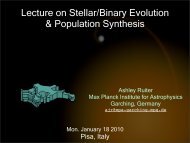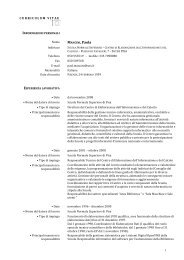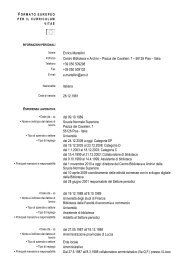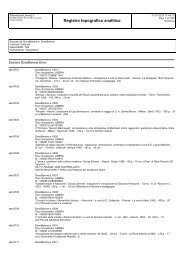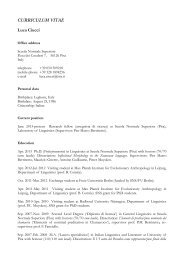Metrics of curves in shape optimization and analysis - Andrea Carlo ...
Metrics of curves in shape optimization and analysis - Andrea Carlo ...
Metrics of curves in shape optimization and analysis - Andrea Carlo ...
Create successful ePaper yourself
Turn your PDF publications into a flip-book with our unique Google optimized e-Paper software.
<strong>and</strong> we simply <strong>in</strong>tegrate twice! Moreover, exploit<strong>in</strong>g the identity∫ s(∫ t) ∫ sh(r) dr dt = (s − r) h(r) dr ,00<strong>and</strong> with some extra computations, we obta<strong>in</strong> the result.In the end we obta<strong>in</strong> that the ˜H 1 gradient need not be computed as a convolution;so the ˜H 1 gradient enjoys nearly the same computational speed as the H 0gradient; moreover the result<strong>in</strong>g gradient flow is more stable, so it works f<strong>in</strong>e <strong>in</strong>numerical implementations for a larger choice <strong>of</strong> time step discretization. Forthese reasons, ˜H1 Sobolev active contours are very fast.10.5 Analysis <strong>and</strong> calculus <strong>of</strong> ˜H 1 gradientsWe write h ∈ T c M as h = avg c (h) + ˜h; this decomposes0T c M = lR n ⊕ D c M (10.16)withD c M :={}h : S 1 → lR n | avg c (h) = 0 .If we assign to lR n its usual Euclidean norm, <strong>and</strong> to D c M the H j 0 norm22 ,then‖h‖ 2˜Hj = |avg c (h)| 2 lR + n λL2j ‖˜h‖ 2 .H j 0This means that the two spaces lR n <strong>and</strong> D c M are orthogonal w.r.to ˜H j .A remark on this decomposition is due.Remark 10.12 In the above, lR n is ak<strong>in</strong> to be the space <strong>of</strong> translations <strong>and</strong>D c M the space <strong>of</strong> non-translat<strong>in</strong>g deformations.That label<strong>in</strong>g is not rigorous, though! s<strong>in</strong>ce the subspace <strong>of</strong> T c M <strong>of</strong> deformationsthat do not move the center <strong>of</strong> mass avg c (c) is not D c M, but rather{ ∫h : h + ( c − avg c (c) ) }〈D s h · T 〉 ds = 0 ,as is easily deduced from equation (2.8).cThe decomposition (10.16) is quite useful <strong>in</strong> the calculus when analyticallycomput<strong>in</strong>g ˜H 1 gradients <strong>and</strong> prov<strong>in</strong>g existence <strong>of</strong> flows. Indeed, let f = ∇ H 0E,g = ∇˜H1E; decomposeTo solvewe have to solve two equations:f = avg c (f) + ˜f , g = avg c (g) + ˜g .f = avg c (g) − λL 2 D 2 sg22 H j 0 was def<strong>in</strong>ed <strong>in</strong> (10.1). Note that Hj 0 is a sem<strong>in</strong>orm on TcM, s<strong>in</strong>ce its value is zero onconstant fields; but H j 0 is a norm on DcM, by Po<strong>in</strong>caré <strong>in</strong>equality (10.5).68


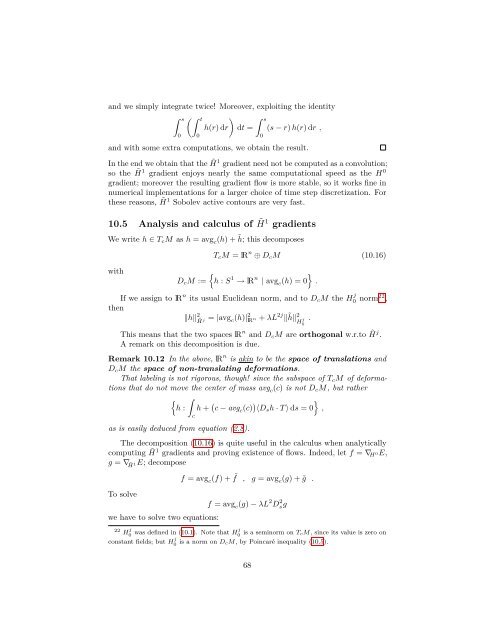

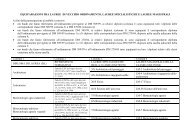
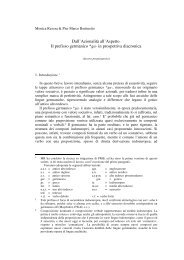
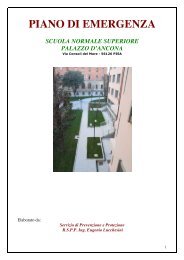
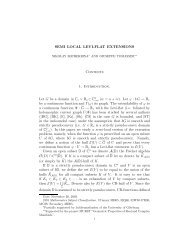
![4. Ghost [Å] vowels in French - Laboratorio di Linguistica](https://img.yumpu.com/49999334/1/184x260/4-ghost-a-vowels-in-french-laboratorio-di-linguistica.jpg?quality=85)


